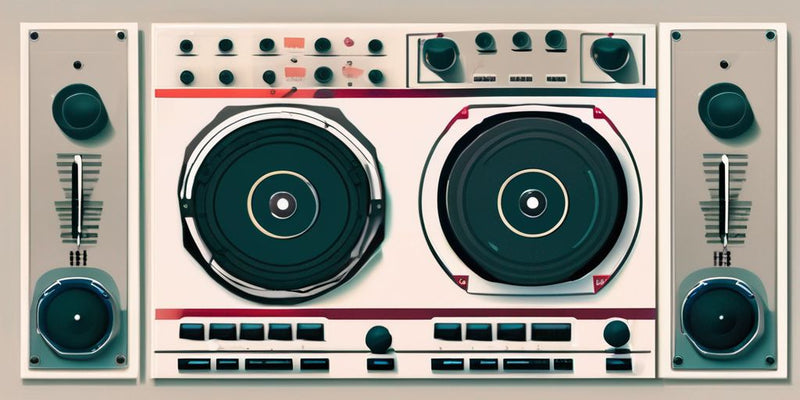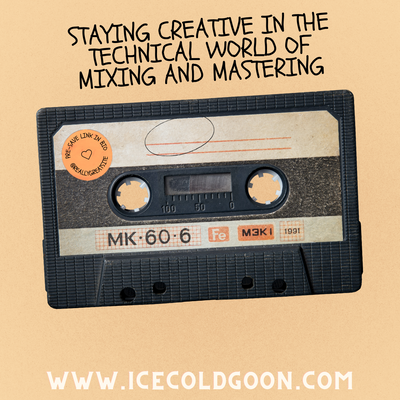Mixing And Mastering Definition
Overview
What is Mixing and Mastering?
Mixing and mastering are two essential steps in the music production process. Mixing involves combining multiple audio tracks into a cohesive and balanced stereo mix. It includes adjusting the levels, applying effects, and enhancing the overall sound quality. Mastering, on the other hand, is the final step that prepares the mixed audio for distribution. It involves fine-tuning the overall sound, optimizing the dynamics, and ensuring consistency across different playback systems. Both mixing and mastering play a crucial role in achieving a professional and polished sound for a music production.
Importance of Mixing and Mastering
Mixing and mastering are crucial steps in the music production process. Mixing involves blending individual audio tracks together to create a cohesive and balanced sound. It includes adjusting the levels, applying equalization, and enhancing the stereo image. Mastering, on the other hand, is the final step where the mixed tracks are polished and prepared for distribution. It focuses on optimizing the overall sound quality, ensuring consistency across tracks, and making the music sound professional and commercially viable. Both mixing and mastering play a vital role in enhancing the sonic experience and bringing out the best in a recording.
Key Differences between Mixing and Mastering
Mixing and mastering are two distinct stages in the music production process. Mixing involves combining individual tracks and elements of a song to create a balanced and cohesive mix. It focuses on adjusting the levels, applying effects, and ensuring that each element sits well in the mix. Mastering, on the other hand, is the final step in the production process and involves preparing the mixed track for distribution. It focuses on enhancing the overall sound, improving clarity, and ensuring consistency across different playback systems. While both processes involve manipulating audio, they serve different purposes and require different techniques and skills.
Mixing Techniques
Balancing the Levels
Balancing the levels is a crucial step in the mixing process. It involves adjusting the volume of each individual track to ensure that they blend together harmoniously. This can be done by using a mixing console or digital audio workstation (DAW) software. By carefully adjusting the levels, the engineer can create a balanced mix where each instrument and vocal can be heard clearly. It is important to note that balancing the levels is not just about making everything loud, but rather about achieving a cohesive and dynamic sound. The engineer must also consider the dynamic range of the mix, ensuring that it has the right amount of loudness and quietness to create a pleasing listening experience. Additionally, the engineer may use techniques such as automation to further refine the balance of the mix.
Equalization
Equalization is a crucial audio processing technique used in both mixing and mastering. It involves adjusting the frequency response of a sound to enhance its clarity, balance, and tonal quality. By using EQ tools, audio engineers can boost or cut specific frequencies, helping to remove unwanted elements or highlight certain aspects of a mix. In the context of mixing, equalization is used to create a cohesive and balanced sound by ensuring that each element of the mix occupies its own sonic space. In mastering, equalization is used to fine-tune the overall frequency balance of a mix, ensuring that it translates well across different playback systems. Effective equalization can greatly contribute to the overall sonic quality and impact of a music production.
Panning and Stereo Imaging
Panning and stereo imaging are essential techniques in mixing that help create a sense of space and depth in a stereo field. Panning involves placing audio elements in the left, center, or right channels to create a sense of movement and separation. Stereo imaging refers to the manipulation of the stereo field to enhance the width and depth of the mix. Techniques such as stereo widening and mid-side processing are commonly used to achieve a wider and more spacious sound. These techniques play a crucial role in bringing out the full potential of a mix and ensuring a balanced and immersive listening experience.
Mastering Techniques
Dynamic Range Compression
Dynamic Range Compression is a crucial technique used in the mastering process. It helps to control the dynamic range of a recording by reducing the difference between the loudest and softest parts. This technique involves using a compressor to compress the audio signal, resulting in a more balanced and consistent sound. By reducing peaks and boosting quieter sections, dynamic range compression can enhance the overall clarity and punch of a song. It is important to use compression judiciously to avoid over-compression and loss of natural dynamics.
Equalization and Enhancement
Equalization is a fundamental audio processing technique used in both mixing and mastering. It involves adjusting the frequency response of a sound to balance and enhance its tonal qualities. In mixing, equalization is used to shape the individual elements of a mix and create a cohesive sound. In mastering, equalization is used to fine-tune the overall frequency balance of a finished mix. Additionally, enhancement techniques such as exciters and harmonic exciters can be applied during the mastering stage to add warmth and clarity to the audio. These techniques help to bring out the best qualities of the music and ensure a professional and polished final product.
Stereo Widening
Stereo widening is a mastering technique that enhances the stereo image of a mix, making it sound wider and more spacious. It creates a sense of depth and immersion by manipulating the stereo field. This technique is achieved through the use of various tools and effects, such as delay, reverb, and chorus. By carefully adjusting the parameters of these effects, engineers can create a wide and expansive soundstage. However, it is important to use stereo widening judiciously, as excessive use can lead to phase cancellation and an unnatural sound. Overall, stereo widening is a powerful tool in the mastering process that adds dimension and interest to the final mix.
Conclusion
The Role of Mixing and Mastering in Music Production
Mixing and mastering play a crucial role in the music production process. Mixing involves blending different audio elements, such as vocals, instruments, and effects, to create a balanced and cohesive sound. It includes techniques like balancing the levels, equalization, and panning. Mastering, on the other hand, focuses on enhancing the overall quality and consistency of the mixed tracks. It involves techniques like dynamic range compression, equalization, and stereo widening. Both mixing and mastering ensure that the final product sounds professional and appealing to the listeners.
Benefits of Professional Mixing and Mastering
Professional mixing and mastering can greatly enhance the overall quality of a music production. By using advanced techniques such as dynamic range compression, equalization and enhancement, and stereo widening, professional engineers are able to bring out the best in each individual element of a mix and create a cohesive and balanced final product. Additionally, professional mixing and mastering can help to ensure that the music translates well across different playback systems and platforms, resulting in a more enjoyable listening experience for the audience. Investing in professional mixing and mastering services can ultimately make a significant difference in the impact and success of a music release.
Final Thoughts
In conclusion, mixing and mastering are crucial steps in the music production process. They help to enhance the overall sound quality, balance the levels, and create a polished and professional-sounding final product. Mixing involves techniques such as balancing the levels, equalization, and panning, while mastering focuses on techniques like dynamic range compression, equalization, and stereo widening. Professional mixing and mastering can greatly improve the clarity, depth, and impact of a song, making it stand out in a crowded music industry. It is highly recommended to seek the expertise of a professional mixing and mastering engineer to achieve the best possible results.











